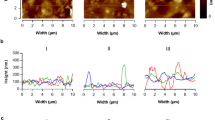Abstract
An in vitro model was used to study whether and how catheter infections can be cured. Silastic catheters were “infected” withStaphylococcus aureus ATCC 25923 andStaphylococcus epidermidis KH11 and V2; these “infections” were then treated with 24, 48 and 96 h continuous infusions of various antimicrobial agents administered both as monotherapy and in combination. TheStaphylococcus aureus strain was considerably more difficult to eliminate from catheters than were theStaphylococcus epidermidis strains. This experience gained in the laboratory was then applied in vivo to 16 episodes of catheter sepsis in seven children. Treatment for at least six days with imipenem/cilastatin combined with fosfomycin or an aminoglycoside successfully eliminated the pathogens isolated from 11 of the 16 episodes of infection. The broad-spectrum combination was chosen because it could not be assumed that individual pathogens would be sensitive to a single substance. Nine of the infected catheters could be retained in the patients. This experience suggests that it may be possible to successfully eliminate the colonization of central venous catheters by coagulase-negative staphylococci using the antimicrobial agents employed here.
Similar content being viewed by others
References
Decker MD, Edwards KM: Central venous catheter infections. Pediatric Clinics of North America 1988, 35: 579–612.
Peters G, Schuhmacher Perdreau F, Jansen B, Bey M, Pulverer G: Biology ofS. epidermidis extracellular slime. Zentralblatt für Bakteriologie 1987, Supplement 16: 15–31.
Peters G, Locci R, Pulverer G: Adherence and growth of coagulase-negative staphylococci on surfaces of intravenous catheters. Journal of Infectious Diseases 1982, 146: 479–482.
Gray ED, Peters G, Verstegen M, Regelmann W: Effect of extracellular slime substance fromStaphylococcus epidermidis on the human cellular immune response. Lancet 1984, i: 365–367.
Pessa ME, Howard RJ: Complications of Hickman-Broviac catheters. Surgery, Gynecology and Obstetrics 1985, 161: 257–260.
Darbyshire PJ, Weightman NC, Speller DCE: Problems associated with indwelling central venous catheters. Archives of Diseases in Childhood 1985, 60: 129–134.
Fischer G, Zawadsky P, Shanks D: Bacterial pathogens in patients with indwelling central venous catheters. Lancet 1985, i: 1284.
Weber TR, West KW, Grosfeld JL: Broviac central venous catheterization in infants and children. American Journal of Surgery 1983, 145: 202–204.
Author information
Authors and Affiliations
Rights and permissions
About this article
Cite this article
Guggenbichler, J.P., Berchtold, D., Allerberger, F. et al. In vitro and in vivo effect of antibiotics on catheters colonized by staphylococci. Eur. J. Clin. Microbiol. Infect. Dis. 11, 408–415 (1992). https://doi.org/10.1007/BF01961855
Issue Date:
DOI: https://doi.org/10.1007/BF01961855




